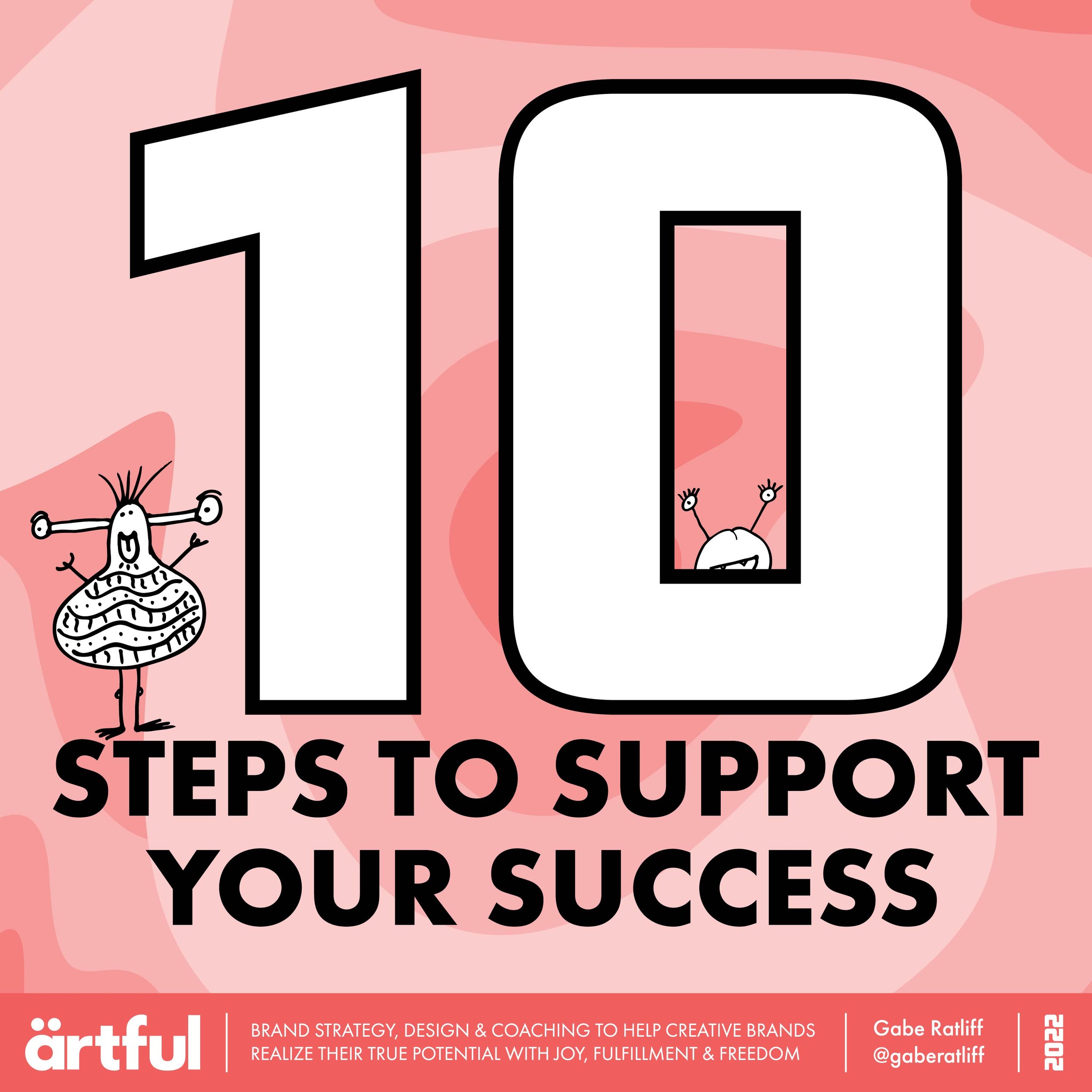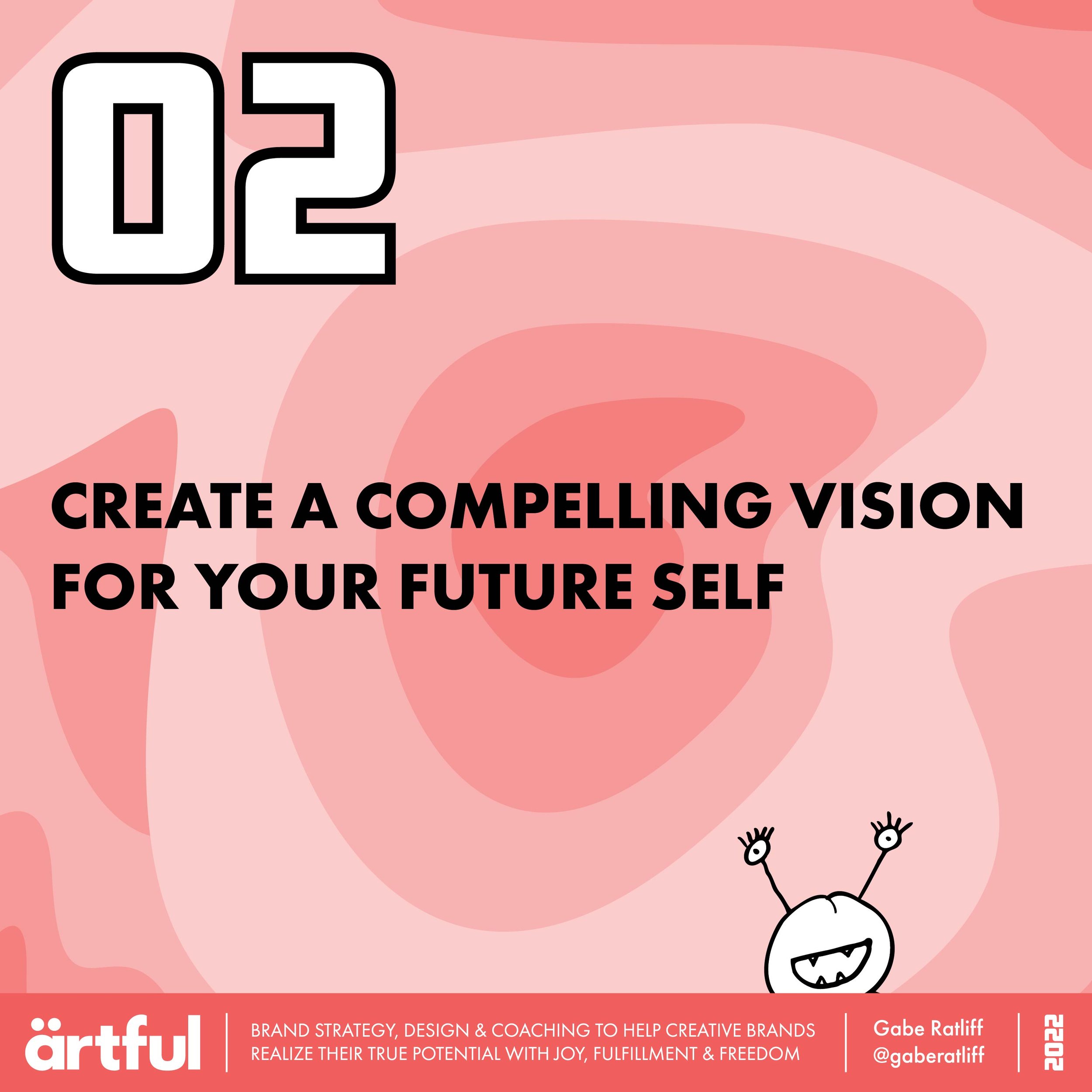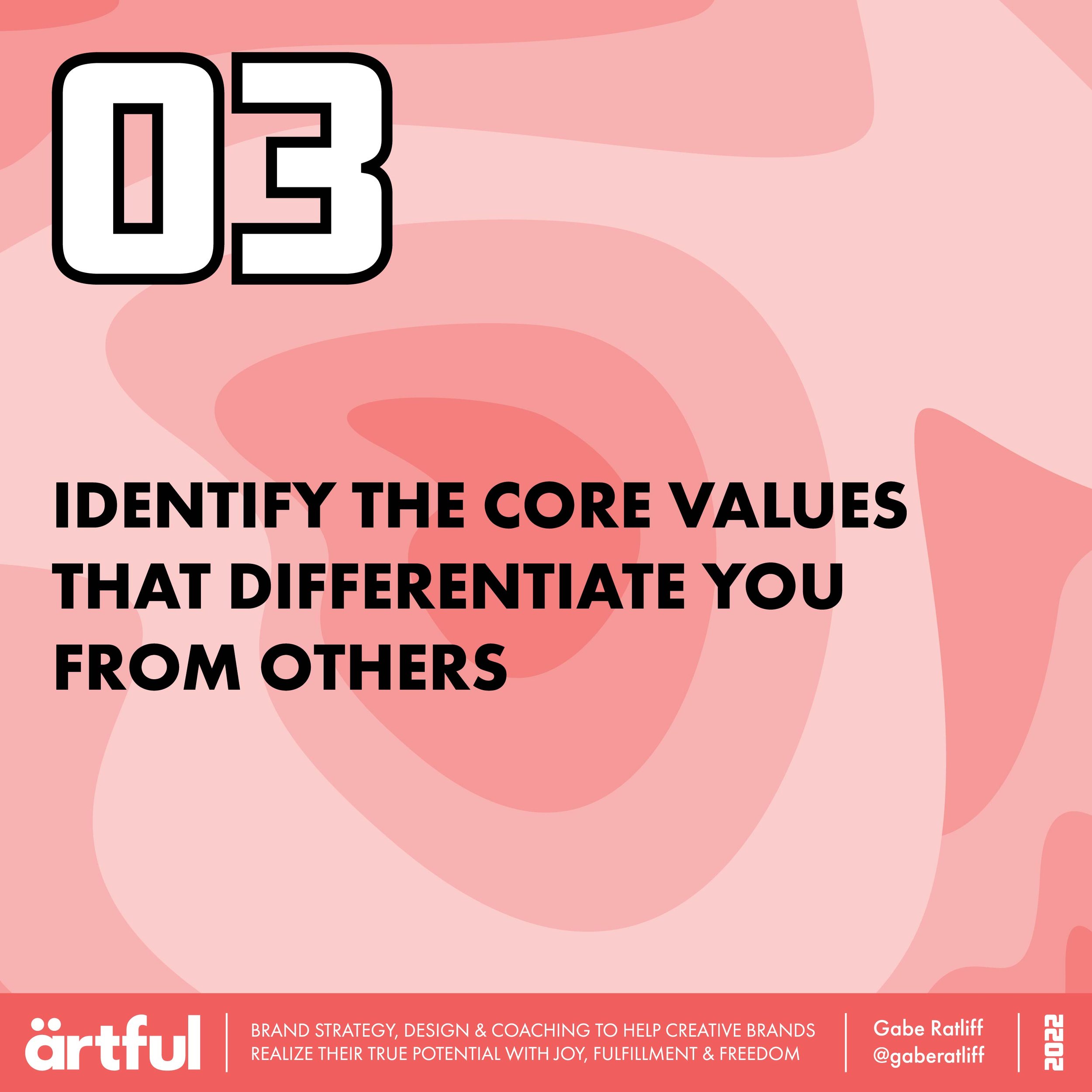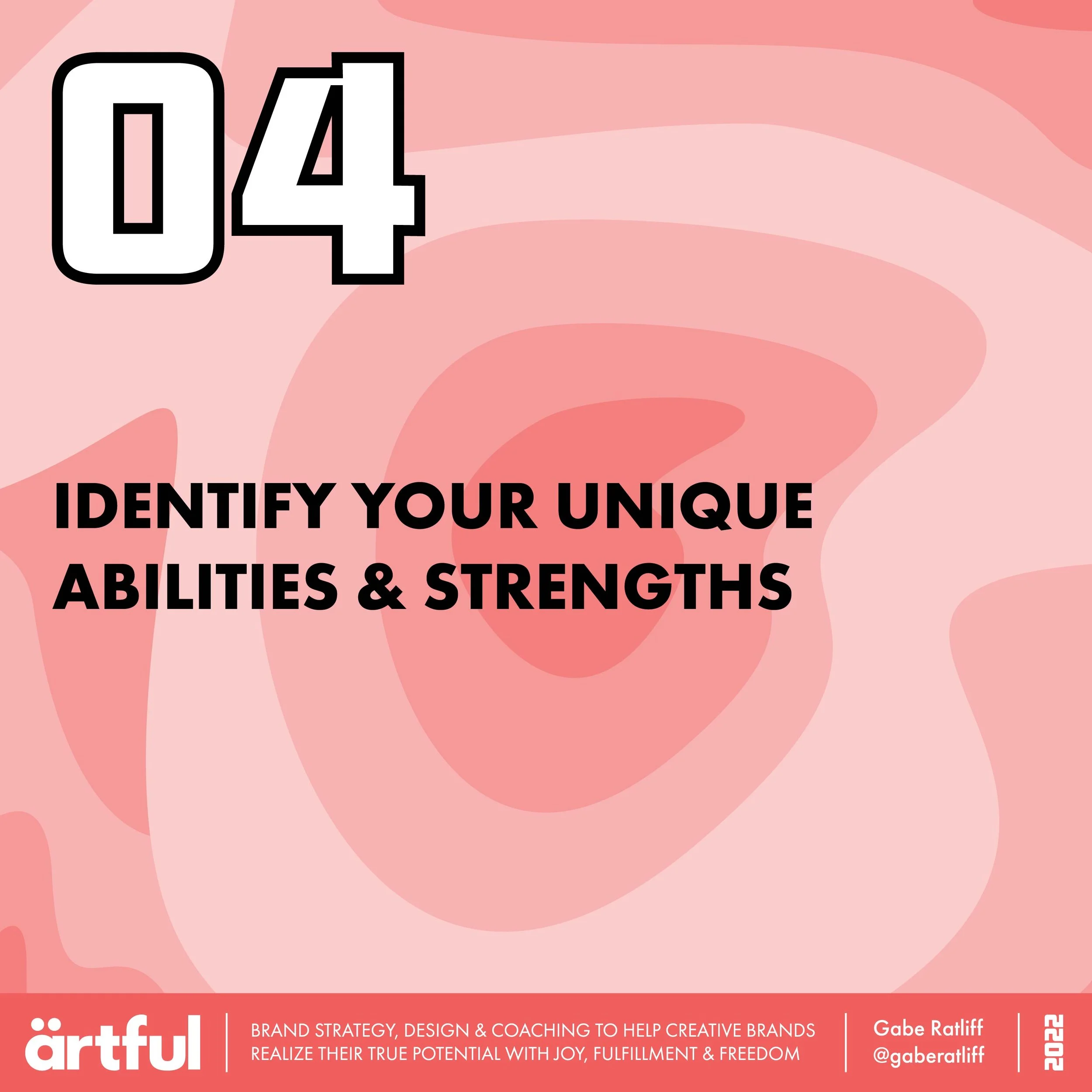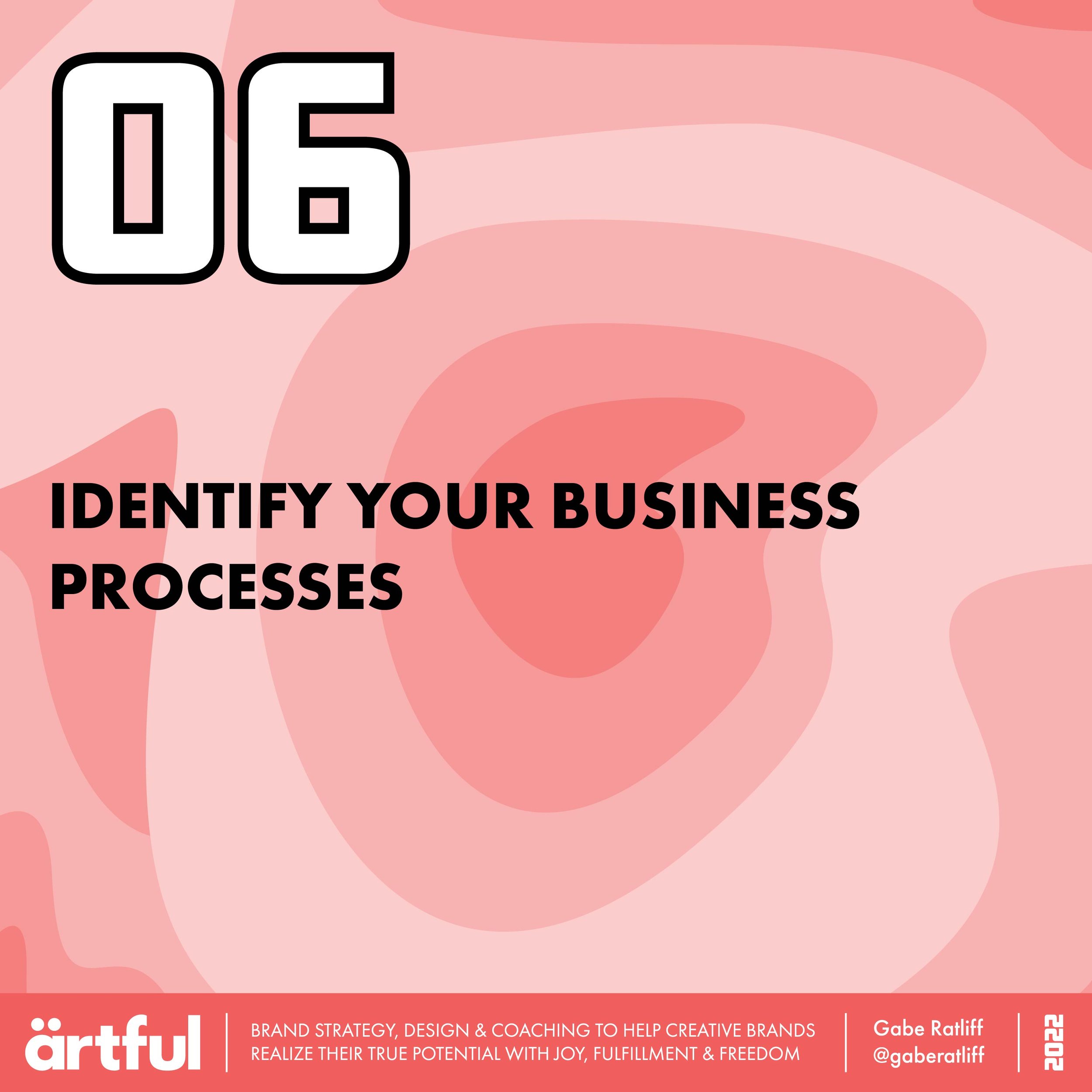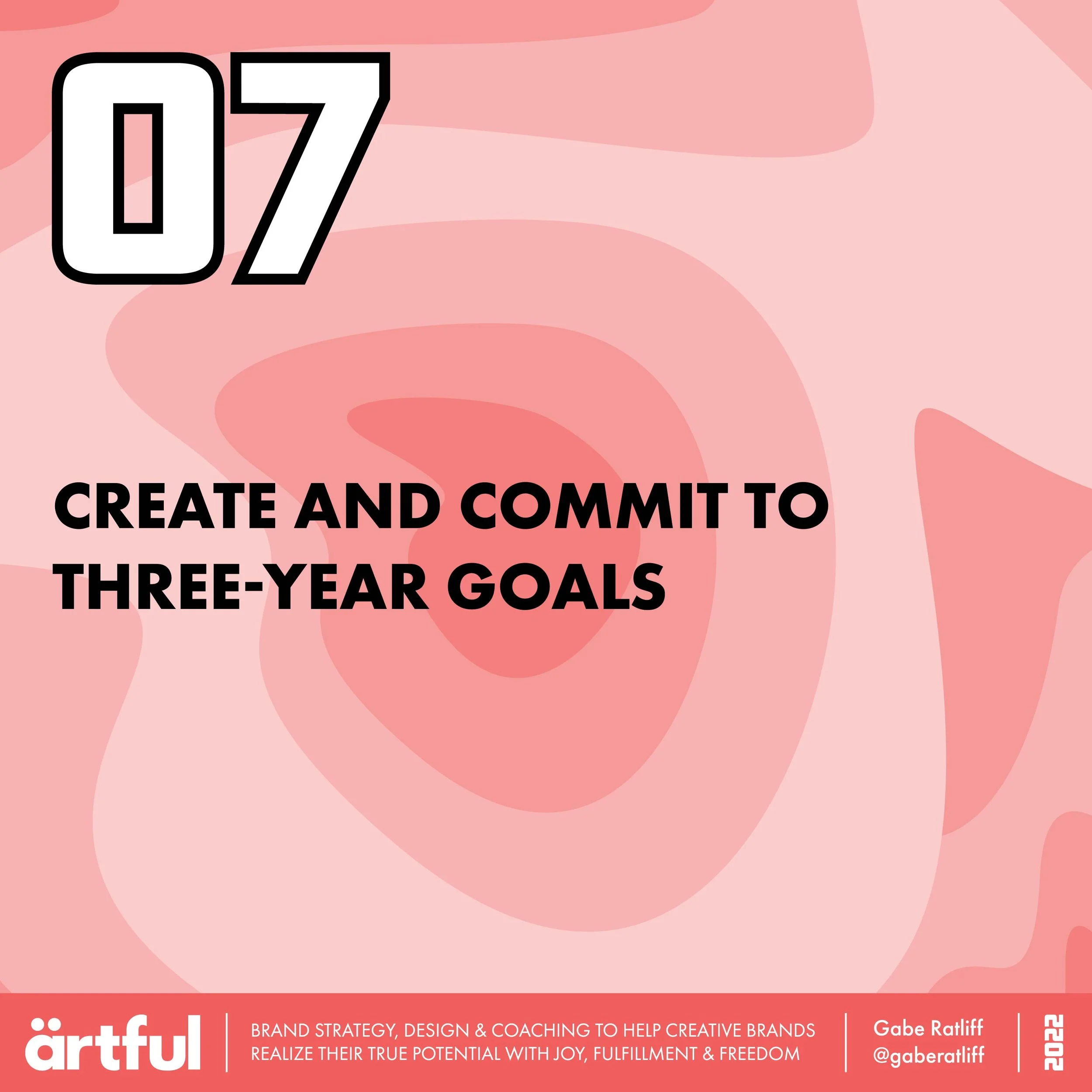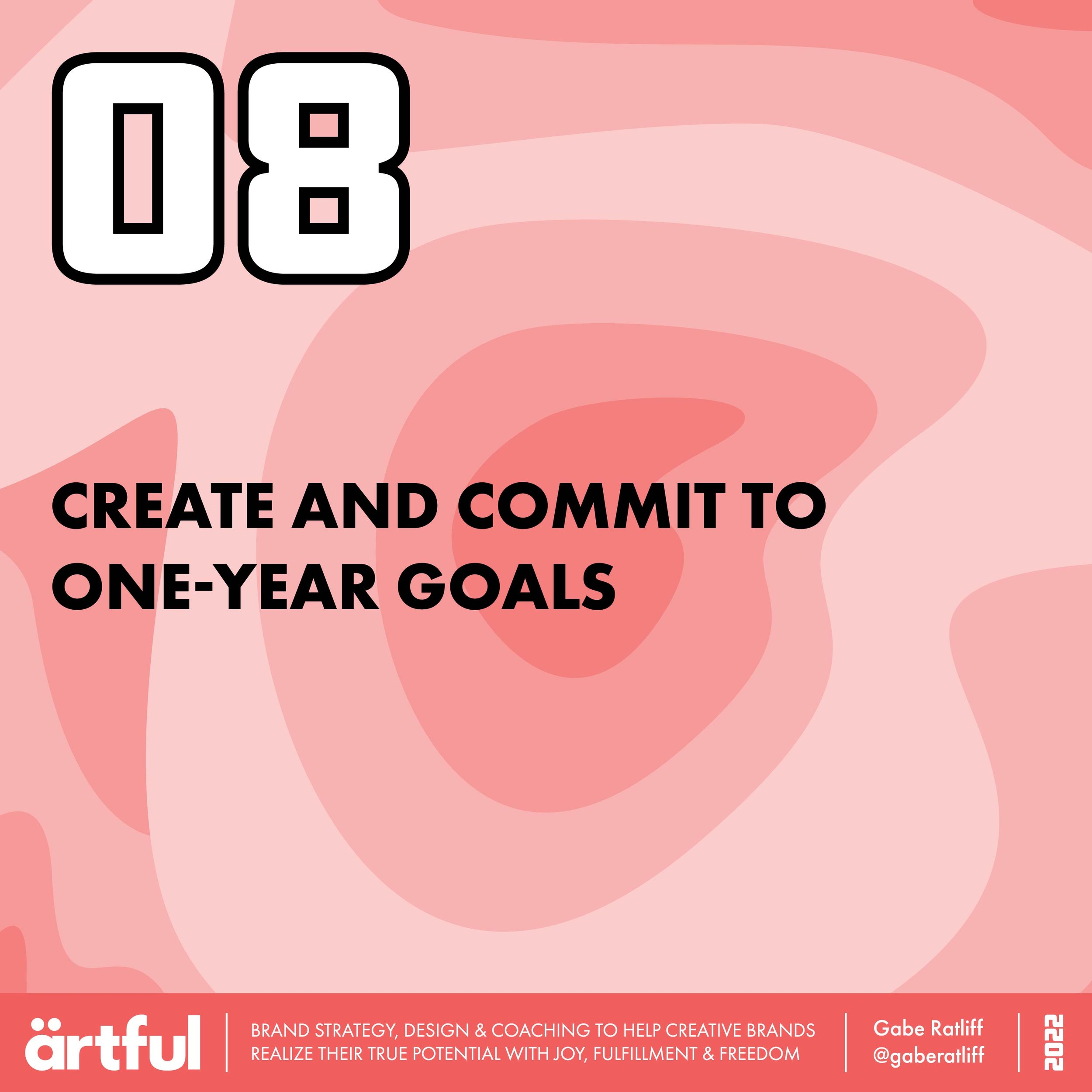10 Steps to Support Your Success
There are ten key steps that you can take today to support yourself and the success of your creative business tomorrow. These are not always the easiest things to do as we hunt and gather for our next client, project, or contract. They might seem like obvious steps to take as you begin your journey as a creative business owner but so many people don’t do them all — myself included. Many of us start as freelancers so we do everything in the business ourselves from accounting to project management to sales and marketing to the creative work itself, and we can’t forget about collecting payment, everybody’s favorite. I was a corporate escapee and jumped in right where I left off supporting any clients I could land with their photography and video needs. It took a while for me to begin thinking about it as a business, especially as a creative business. It didn’t seem necessary in the early stages because I was doing what I was experienced in and what people had paid me to do in the past. As I started to take on bigger projects and brought on subs, I quickly realized the difference. As you add the leadership aspect to the roles in the business, things begin to change and evolve and you begin to change with them. There is a natural evolution that businesses go through as they learn, grow, and mature, just as we do in life. As I stepped more and more into the role of being a leader and accepted that responsibility, I realized that there was a place for me as a business owner, and that to be a business owner took asking the tough questions, and doing the deep work, especially if you want to not only survive but to thrive. The pandemic showed the cracks in businesses, as well as entire industries. It’s provided an opportunity for us as humans and as businesses to re-evaluate, reset, and re-engage in the community in a more aligned and productive way. Getting clear on these ten things will help you to set your creative business up for success by clarifying things like your values, vision, and goals so you can serve your ideal clients and the community you care about with a sense of joy, fulfillment, and freedom.
QUICK LINKS
Write a Mission Statement that connects to your life
Create a Compelling Vision for your future self
Identify the Core Values that differentiate you from others
Identify your Unique Abilities & Strengths
Identify your Target Market
Identify your Business Processes
Create and commit to Three-Year Goals
Create and commit to One-Year Goals
Identify the Obstacles & Opportunities standing in your way
BONUS: Create your Bucket List
1) Write a Mission Statement that connects to your life
We are our business. Who we are and why we do what we do is critical to the success of our creative business. It’s easy to get a sole proprietorship established with your Secretary of State’s office, create a portfolio site, and share that you are an artist or designer for hire. Of course, you’ll be like thousands of other creatives hunting and gathering for any work you can get with any clients that will hire you. Writing a mission statement is one of the most important things we can do to support our success because it provides us with our North Star. It is a constant reminder of our “why”. Simon Sinek articulates this in his book, Start With Why. He posits that “People don't buy what you do; they buy why you do it. And what you do simply proves what you believe.” He boils this concept down in his seven-minute TED Talk that he gave in 2009. Without a North Star to guide us, our compass can point in any and all directions, just like Jack Sparrow’s compass in Pirates of the Caribbean. We must know who we are, what we stand for, and why so that we have a constant guide as we build our business, speak with prospects and clients, and choose the work we take on. That’s not even getting into things like scaling, defining repeatable processes for efficiency, and branded products so you can establish multiple revenue streams for your business that can provide cash flow in the slow months. A mission statement should pull from your strengths and unique abilities. It should address your core values and principles. It should identify your target clients and how you serve them (We’ll dive deeper into this soon). Most of all, it should be a clear and concise statement that you can go back to as a reminder throughout the growth and evolution of your business. It should be a never-changing guide for you and your business in a world that is constantly changing. Many of us creatives like the shiny new things and having a clear and concise statement that keeps you focused on your mission is vital to keep you from straying from your path by current trends and cool ideas that might be good down the road but not while you’re building your creative business.
2) Create a Compelling Vision for your future self
Now that you know your mission statement, it’s time to map out your Ten-year goals. These might seem ridiculously far out and unnecessary in a world that promotes instant gratification and quick wins. However, these are far enough out that you can really push yourself to reach for the stars with your goals and to have the time to achieve them. Anything worth having doesn’t come easy no matter what you see in those get-rich-quick ads on YouTube and late-night infomercials. As I said, shoot for the stars, but also really get honest with yourself and what it is that you truly want for your business and your life. Do you want to have a team or do you like to work solo and just like to collaborate with vendors or fellow creatives when necessary? What clients would you really want to work with if you could and nothing was standing in your way? How much of salary would be exciting to you while providing for your family and interests? What skills or expertise would you like to have that might seem like a dream today? What are the things you’re able to enjoy in your life because you will have achieved these goals? Are there charities or causes you’d love to support through your business and because you are successful enough to be able to do so? Do you want to start your own foundation so that you can focus on a cause that is near and dear to your heart? Are you able to finally buy your first home or a vacation home in another country? Visualize enjoying these achievements and their rewards as you manifest them for your future self. Manifesting is a funny thing. The universe provides, especially when you ask for it with intention and commitment. On a side note, a cool side effect of doing this exercise is that by defining your ten-year goals you will be able to reverse-engineer them to define your short and intermediate goals (which will be coming soon). You’ll want to look at six key areas in your life and business, including revenue & profitability, your team makeup, education & expertise, ideal client, service model, and life role integration.
Revenue & Profitability — What are you bringing in before taxes and what are you actually taking home in 10 years?
Team Makeup — How many people are on your team and what are their roles in 10 years?
Education & Expertise — What would you like your skill set to look like in 10 years (certifications, degrees, etc.)?
Ideal Client — Who are you working with in 10 years? What are they like? What are their values? How much revenue does each client provide?
Service Model — What are your clients going to experience when they work with you in 10 years?
Life Role Integration — What are the things that you’re going to be enjoying in your life as you achieve these goals in 10 years?
3) Identify the Core Values that differentiate you from others
Do you know your core values? This topic has become more prevalent over the years with more and more companies becoming socially conscious. As consumer voices have become powerful with the internet and social media. Their ability to create change has evolved with it — sometimes for the good and sometimes for the bad of a company, depending on their values and the ways they embrace them within their organization. Take some time to brainstorm your core values and principles. These should be things that are unyielding to who you are and what you stand for. They will be helpful to your fulfillment when choosing and working with clients because they will have similar values. There will be more of a sense of ease between you and your clients when working together. It will be a natural sense of synergy that creates the space for even greater accomplishments for both of you because you are working towards a common goal with aligned views on the world. Getting paid to do the work you love is great and it’s even better when you are working with clients that have the same values as you do.
4) Identify your Unique Abilities & Strengths
Coming up with your unique abilities and strengths can be difficult for some people. There are so many amazing creatives in the world that are as humble as can be and just as many of them are introverted as well. We may be fun, creative, and different from the herd but that doesn’t mean that we all like to be in the spotlight. There are many of us that definitely don’t like to ask people for anything if we can help it. I’ve had challenges with this myself. There are a couple of great options to support this step whether this is a problem for you or not. First, fill in the blank of this statement, “I feel powerful and energized and in flow when I _______________.” It is a simple yet helpful exercise that can guide you in defining your strengths. Another great exercise that I did myself and thoroughly enjoyed was the Unique Ability book and workbook. It takes you through a series of exercises that help you to define then refine your superpowers or unique abilities. One of the most beneficial exercises was to reach out to several people that know you really well (ie. Family, friends, peers, colleagues, managers, mentors, etc.) and ask them what they think your unique abilities are. It is so enlightening and also very humbling to get other people’s perspectives about your strengths. And for those that don’t like to ask people for anything, I took the time to write down the strengths and unique abilities of all the people that took the time to write mine. It seemed like the right thing to do since they took time out of their lives to support me on my journey. My hope was that I’d be able to shed a little light on their strengths and what I love about them too. Even if you don’t get the book and workbook, I highly recommend this additional exercise to write down your own thoughts about your strengths. Getting outside perspectives from people that know and love you, is a wonderful way to enrich your relationship with them and to learn more about yourself without the judgments we can put on ourselves. More often than not you will get surprised by a comment or two which I found even more interesting. Many of us fight with imposter syndrome as artists and creatives and can miss out on other attributes that others see plain as day.
5) Identify your Target Market
There is another great fill-in-the-blank exercise to help with figuring out your ideal client. Just fill in this sentence, “I get energy out of working with people who _____________.” Brainstorm again here. Try to not get too specific in the beginning. Let yourself be free to explore the possibilities of what comes up here. You might surprise yourself if you truly let go and don’t have who you think you should be working with (or who you have been supporting). Sometimes expanding our options can help us to find a different niche that we might have been missing out on that’s even more aligned with our values and mission, especially now that you’ve defined yours. This is also a great opportunity to think about potential clients or vendors that can get you access to clients in that target market which allows you to work smarter not harder. For example, think about the supply chain related to your products or services. Are there opportunities to work with clients higher in the supply chain so that you can get more work through them rather than trying to find one customer at a time? Are there resellers or other vendors that work with the ideal clients that you can reach out to develop relationships with so they use or sell your services or products for you? This is a wonderful way to set yourself up for repeat business with your ideal clients but through a vendor that works with that specific target constantly.
6) Identify your Business Processes
This can be one of the more difficult steps in the early stages of a business. Some businesses never truly define their business processes which can be a detriment to their growth and often their survival. Start very high level. Keep it simple and focus on the key steps in your business process. Think about the process before, during, and after you work with clients. What are the processes behind the scenes? What are the steps once a client comes on board? What is the engagement with a client like and how long is it? What is your follow-up like once deliverables have been provided to the client? What processes can you automate or delegate? Are there any steps that can be eliminated in your current process? Do you start with a free discovery call and then begin paid engagement? Do you have contracts or agreements? Do you have SOWs that are updated for each client? Do you have set pricing for projects or is every project custom? What processes can be repeatable that inevitably allows them to be scalable? Do you have too many services that you offer so your processes are constantly changing with each client? What are processes that you will do in your business to differentiate you from other businesses while creating a great experience for your prospects and clients as well vendors, subs, or employees?
7) Create and commit to Three-Year Goals
Revenue & Profitability — What are you bringing in before taxes and what are you actually taking home in 3 years?
Team Makeup — How many people are on your team and what are their roles in 3 years?
Education & Expertise — What would you like your skill set to look like in 3 years (certifications, degrees, etc.)?
Ideal Client — Who are you working with in 3 years? What are they like? What are their values? How much revenue does each client provide?
Service Model — What are your clients going to experience when they work with you in 3 years?
Life Role Integration — What are the things that you’re going to be enjoying in your life as you achieve these goals in 3 years?
Take your Ten-year Goals and reverse-engineer them to come up with your Three-year Goals. Once you’ve come up with your Ten-year Goals it should be pretty simple to break that down to your Three-year Goals. It could just be lower numbers for the revenue & profitability, team, certifications, etc. as well as lower expected revenue from your ideal clients. The service model and life role integration will probably probably be about the same if not exactly the same as your Ten-year Goals.
8) Create and commit to One-Year Goals
Revenue & Profitability — What are you bringing in before taxes and what are you actually taking home in 1 year?
Team Makeup — How many people are on your team and what are their roles in 1 year?
Education & Expertise — What would you like your skill set to look like in 1 year (certifications, degrees, etc.)?
Ideal Client — Who are you working with in 1 year? What are they like? What are their values? How much revenue does each client provide?
Service Model — What are your clients going to experience when they work with you in 1 year?
Life Role Integration — What are the things that you’re going to be enjoying in your life as you achieve these goals in 1 year?
You’ll do the same thing you did to reverse-engineer the Ten-year Goals to get your Three-year Goals You’ll just continue to break those goals down further to strong yet stretched goals for a year from now. Once you have your one-year goals written, break them down even further into the quarterly goals that will get you there. We are just continuing to reverse-engineer your goals from ten years down to three then to one year then down to four quarters and so on. This helps to break them down into bite-sized pieces so they don’t feel so overwhelming. Once you get your quarterly goals, keep going and break them down into monthly and weekly. They don’t have to be perfect. You can (and will) adjust the smaller goals as needed as you take action and move closer to the next goal. We’re looking for high-level yet specific goals further out that act as a guide as you break them down into actionable steps.
9) Identify the Obstacles & Opportunities standing in your way
Besides yourself (heh!) what else is standing in the way of your success? Now that you’ve created your goals for the next ten years, you have visibility into the obstacles and opportunities related to them. What are the opportunities that await you if you were able to remove those obstacles? Do an audit on your business. Take some time to really think about the current landscape. Be honest with yourself. Make a list of your current challenges and obstacles in your way. Then make a separate list of the current opportunities that are possible. This is when it’s time to be in a place of abundance and not scarcity (another word for “scared”). Think about those areas you might have discovered where you can automate or delegate. There are so many tools and apps out now to help business owners that were not available even ten years ago — and many of them are FREE! There are also resources like Craigslist or Fiverr where you can find reasonable prices for an assistant, bookkeeper, or project manager to help you where you need it so that you can be focusing on the areas of the business where you’re needed most. You’ve already identified those areas with all of the work you’ve done.
10) BONUS: Create your Bucket List
Now, if you’re into choosing your own adventures like me, you can either choose to do this bonus step before or after these nine steps or you can call it if you’re wiped and want to save this for another day. Annnnnd…If you’re up for it, let’s add a fun bonus step to the mix that can create dozens of exciting things to look forward to and to work towards in your life. Write down 100 things you want to do before you die — yep, I’m talking about finally creating your bucket list. You know, that thing that you’ve heard about other people doing and thought, I’ll get to that one day. It’s time. Find a quiet place, break out a pen and paper, silence your phone, and brainstorm a comprehensive list of the things you really want to do in life, including places you want to visit, people you want to meet, adventures you want to have, sights you want to see, sounds you want to hear, tastes you want to savor, and sensations you want to feel. Exhaust every corner of your mind. Enjoy visualizing each and every experience as you crank out a massive list of things that you’ve always wanted to do. Remember, this is for you so get creative and enjoy manifesting your future!
Are you a creative business owner, freelancer, entrepreneur, or corporate escapee just getting started or about to take the leap that’s ready to realize your true potential? If so, spend the time going through these ten steps to support your success. If you’d like to work together to clarify your vision and goals, I offer a 9-week and 6-month coaching program where we’ll dive deeper into this process with the support, encouragement, and accountability to see that it’s done so you can start creating your future. Let’s go!

